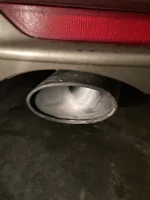For those who cut open filters,
For years now I have had no problem running a high end 20K mile rated filters for two oil changes...6000 - 7500 miles per change. And actually back in the day when I was working full time, three kids driving, and five vehicles I did the Amsoil + Amsoil filter on my wife’s car per the 20K or once per year oil/filter change guidance they gave...and believe me she drove 20K per year!
So my question,
With GDI/turbo engines has anyone noticed that the filters are loaded with more “particulates” with these sorts of engines, and maybe I should move away from the two oil changes per filter. Oh, I do 5000 mile oil changes on these engines...the vehicle maintenance minder is usually showing 50% oil life left.
Thanks,
For years now I have had no problem running a high end 20K mile rated filters for two oil changes...6000 - 7500 miles per change. And actually back in the day when I was working full time, three kids driving, and five vehicles I did the Amsoil + Amsoil filter on my wife’s car per the 20K or once per year oil/filter change guidance they gave...and believe me she drove 20K per year!
So my question,
With GDI/turbo engines has anyone noticed that the filters are loaded with more “particulates” with these sorts of engines, and maybe I should move away from the two oil changes per filter. Oh, I do 5000 mile oil changes on these engines...the vehicle maintenance minder is usually showing 50% oil life left.
Thanks,

